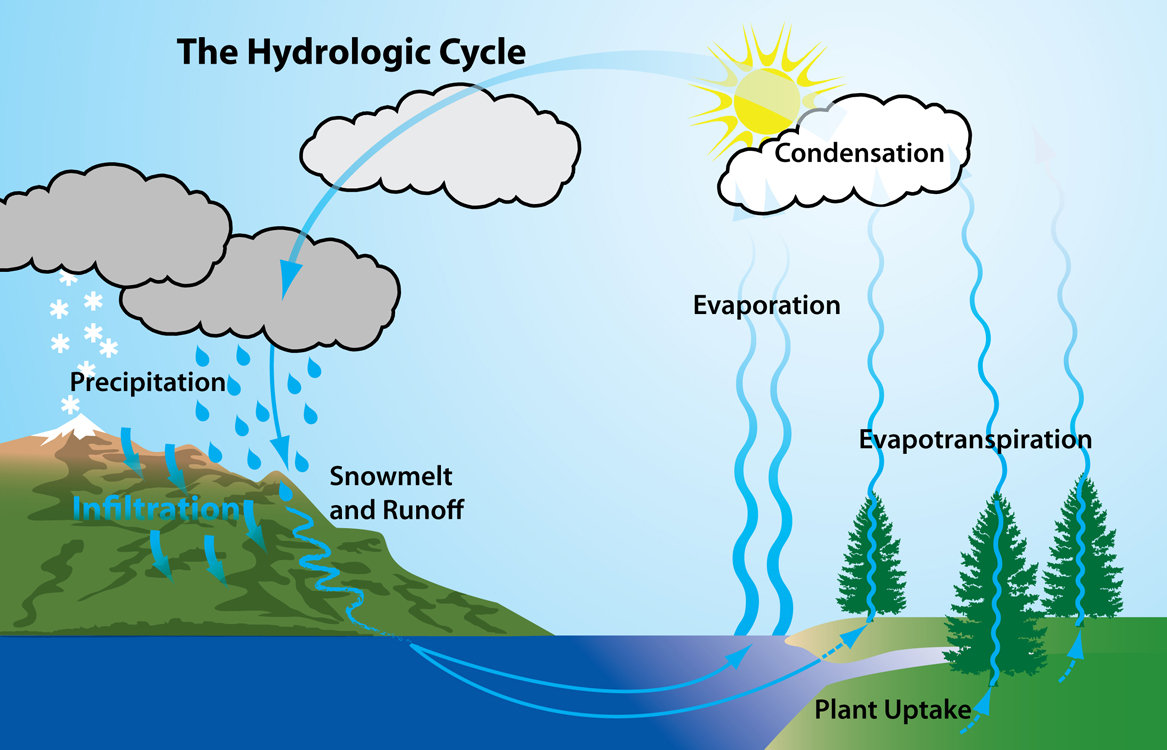Unit 2 Blog
Vocabulary:
Climate: the average weather that occurs over a long period in an area

Troposphere: layer of atmosphere that is closest to the Earth's surface; contains us and weather

Stratosphere: layer of atmosphere that contains the ozone

Albedo: percentage of sunlight reflected from the surface

Hadley Cells: convention currents that cycle between the equator and 30 degrees north and south

ITCZ: the intertropical convergence zone is the area that recieves the most intense sunlight; ascending branches of the two Hadley cells converge here

Polar Cells: convention currents formed by air that rises at 60 degrees north and south and sinks at the poles (90 degrees north and south)

Coriolis Effect: the deflection of an object's path due to Earth's rotation 

Gyres: large patterns of water circulation

Upwelling: upward movement of water toward the surface

Thermohaline Circulation: drives the mixing of surface and deep water

ENSO: the El Nino-Southern Oscillation is a periodic change in winds and ocean currents collectively

Rain Shadow: when warm, wet air lets out its water on one side of the mountain then travels to the leeward side of a mountain and becomes warm and dry causing a desert like area

Current Event:
The increase of temperatures in the poles are causing less temperature differences and are changing the amount of wind be made. The less wind there is the better or worse some predators can hunt which can cause prey to either diminish or flourish. With the changes in populations entire food webs can be affected.
Reflection:
Human Impact: Humans have been affecting habitats and biomes since we started breathing. Only recently we have started trying to truly reverse some of the changes we made. With the destruction of certain environments for resources, we have been nipping away at the larger habitats and started expanding some, like deserts, and shrinking others, like rainforests. While we have been trying to replant trees and recreate habitats, the damage to certain places has already been done.
Environmental Impact: With the changing of some biomes comes change to weather as well. Wind patterns and speeds can be altered and slowed. These changes can affect food webs and ultimately humans as well. With the changing winds heat is redistributed to places it might not normally get it and those places are warmed up; cold could also be redistributed to places it wouldn't normally be cold. This would throw ecosystems out of balance.
Economic Impact: With some animals going extinct due to the destruction of their habitats, some businesses won't be able to rely on the food supply they used to be offered. Tax dollars and time can be put into the resurrection of habitats to attempt to recreate the food supply and balance things for the animals and people who live there. Tons of money is put into the stopping of air pollution so the tainted air doesn't ride the winds and change temperatures in areas that should be colder.
Government Legislation: Researchers at the Smithsonian Migratory Bird Center in Washington, D.C. have developed a program to offer a "Bird Friendly" seal of approval to coffee farmers who were using environmentally friendly shade grown coffee techniques. This new form of growing coffee involved planting the bushes in an rain forest area where they could be grown with less use of pesticides and are more helpful to the environment. The Arbor Day Foundation also promotes this way of growing coffee.